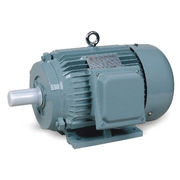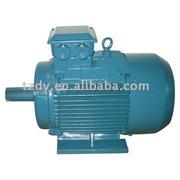Welcome To Power 3
power 3
Three Phase Motor
Three-phase motors are robust pieces of equipment used in commercial and industrial facilities capable of years of dependable service, provided they are properly sized, well maintained, and supplied with balanced three-phase power.
Because three-phase motors are so dependable, people often install the minimum protection required by the National Electric Code: overload protection on each phase. This typically takes the form of fuses or thermal overloads (heaters).
These overload protection devices are sized to prevent the motor from drawing too much current, but they don't provide reliable protection from severe voltage imbalance or complete loss of one of the phases (single phasing).
Voltage imbalances can occur in your facility or on the utility system if too many single-phase loads are added to one of the phases. Single phasing - a complete loss of one of the phases - is the worst case of voltage imbalance. It can be caused by a downed power line, a blown transformer fuse, a single-phase overload condition, or by an equipment failure in your facility.
If a motor is single-phased while it is running, the remaining two phases will continue to rotate the motor and will attempt to supply the torque and power required by the load. If the condition persists, overheating and winding failure will likely occur.
Traditional strategies to protect against single-phasing include voltage relays or time-delay fuses matched to measure motor loading and they still could allow single-phasing.
Solid-state phase monitoring devices are now available providing much better protection. These devices are available as options when purchasing a motor starter or as stand-alone devices. A motor starter can be specified with a solid-state overload block instead of the thermal overloads. The cost of the solid-state option is comparable to standard thermal overloads.
Stand-alone phase monitors are essentially solid-state voltage relays that can sense voltage imbalance. They have output contacts that can be tied into the motor control circuitry to take it off line if a severe voltage imbalance or loss of phase occurs. These devices cost as little as $200 plus installation.
If you are controlling your motors with variable speed drives, it is likely the drives already have phase monitoring built in. When in doubt, always consult the manufacturer.

